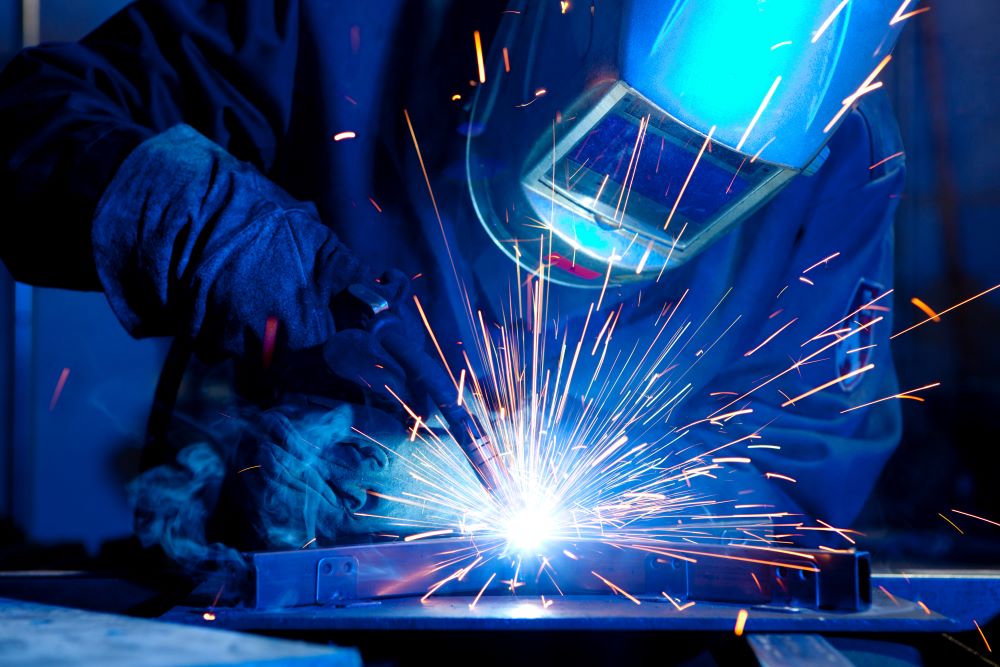Why a Welding WPS is Crucial: Enhancing Consistency and Compliance
Why a Welding WPS is Crucial: Enhancing Consistency and Compliance
Blog Article
The Ultimate Overview to Welding WPS Procedures: An Extensive Summary for Welders
In the intricate world of welding, Welding Procedure Requirements (WPS) function as the foundation of making sure high quality, consistency, and safety in welding procedures. Comprehending the nuances of producing, applying, and keeping track of WPS treatments is essential for welders seeking to elevate their craft and satisfy market requirements. As we look into the various elements of a WPS and discover the ins and outs of qualification and accreditation, we will certainly discover the crucial function these procedures play in the realm of welding. Let's start a journey to decipher the intricacies and value of WPS procedures in welding practices.
Significance of WPS Procedures
Recognizing the relevance of Welding Procedure Specs (WPS) treatments is crucial for making certain the top quality and honesty of bonded structures. WPS procedures function as a roadmap for welders, outlining the necessary steps, parameters, and products needed to attain an audio weld. By adhering to WPS standards, welders can ensure uniformity in their work, resulting in dependable and structurally audio welds.
One of the primary reasons that WPS procedures are essential is their function in maintaining weld high quality and honesty. Adhering to the specified welding parameters and methods outlined in the WPS helps stop flaws such as porosity, cracking, or incomplete fusion, which can jeopardize the stamina and durability of the weld. Furthermore, WPS treatments are important for ensuring conformity with industry requirements and codes. By complying with well-known WPS guidelines, welders can demonstrate that their job meets the necessary requirements for safety and quality, giving assurance to customers, assessors, and regulatory bodies. In significance, the importance of WPS treatments can not be overstated, as they are essential to achieving constant, top quality welds that meet market requirements and specs.

Parts of a WPS
A Welding Procedure Specification (WPS) usually makes up vital elements that detail the particular requirements for executing a weld, making certain uniformity and quality in the welding procedure. The crucial components of a WPS consist of necessary variables such as base steels, filler steels, interpass and preheat temperature levels, welding procedures, protecting gases, welding settings, and post-weld warmth therapy requirements.
Base metals describe the materials being signed up with, while filler steels are utilized to load the gap in between the base steels during welding. Preheat and interpass temperature levels are important for regulating the warmth input and preventing issues like fracturing or distortion. The welding procedure outlines the particular technique to be utilized, whether it's gas metal arc welding (GMAW), protected metal arc welding (SMAW), or an additional approach. Shielding gases safeguard the weld swimming pool from climatic contamination. Welding placements define the orientations in which welding can be done. Post-weld warm therapy might be needed to relieve tensions and enhance the weld's homes. A thorough understanding of these elements is important for producing a reliable and extensive WPS.

Qualification and Certification
Having developed the vital parts of a Welding Procedure Requirements (WPS), the emphasis now changes in the direction of the important facets of qualification and accreditation in welding methods.
Accreditation, on the other hand, is the formal recognition of a welder's qualifications by an appropriate qualification body or organization. Welding qualifications are usually based on the certain welding procedures, materials, and positions a welder is qualified to collaborate with. Holding a legitimate welding accreditation demonstrates that a welder fulfills industry requirements and is skilled to execute welding jobs to the called for specifications.
Creating a WPS
To his explanation develop a Welding Procedure Requirements (WPS) that fulfills sector standards, cautious consideration of welding procedures, products, and functional specifications is important (welding WPS). The very first step in creating a WPS is to determine the welding process to be made use of, such as gas metal arc welding (GMAW) or secured steel arc welding (SMAW) When the welding process is figured out, the following essential facet is choosing the proper products, thinking about variables like base steel type, thickness, and joint layout. Operational criteria such as welding current, voltage, travel speed, and shielding gas structure need to likewise be carefully specified in the WPS.

Implementing and Keeping An Eye On WPS
Upon settling the extensive Welding Procedure Specification (WPS) that diligently details welding processes, products, functional parameters, and top quality guarantee procedures, the focus shifts to successfully implementing and keeping an eye on the recognized procedures. Implementation involves making sure that all welders associated with the task are familiar with the WPS and follow it thoroughly throughout the welding process. This calls for supplying sufficient training and supervision to guarantee adherence to the specified procedures. Keeping track of the WPS includes continuous oversight to validate that welding tasks line up with the documented requirements. Examinations, screening, and quality assurance steps are essential parts of the surveillance process to determine any kind of inconsistencies or concerns promptly. Regular audits and testimonials of the welding treatments assist in keeping consistency and top quality throughout the project. Effective execution and monitoring of the WPS are vital for ensuring the honesty, toughness, and safety of the welded joints, eventually adding to the general success of the welding job.
Conclusion
Finally, understanding and complying with Welding Treatment Specifications (WPS) is vital for welders to guarantee top quality, uniformity, and safety in their job. By knowing the components of a WPS, getting appropriate credentials and accreditations, creating in-depth treatments, and applying and checking them properly, welders can improve their skills and effectiveness in welding practices. Sticking to WPS treatments is important for creating high-grade welds and meeting industry criteria.
In the elaborate world of welding, Welding Treatment Specifications (WPS) serve as the foundation of ensuring high quality, consistency, and security in welding operations. The welding procedure outlines the certain strategy to be utilized, whether it's gas steel arc welding (GMAW), secured useful source steel arc welding (SMAW), or an additional approach.To establish a Welding Procedure Requirements (WPS) that meets sector standards, cautious factor to consider of welding procedures, materials, and functional parameters is necessary. The first step in creating a WPS is to determine the welding process to be utilized, such as gas metal arc welding (GMAW) or protected metal arc welding (SMAW)Upon finalizing the detailed Welding Treatment Spec (WPS) that thoroughly information welding procedures, products, functional criteria, and quality assurance measures, the emphasis changes to successfully carrying out and checking the established procedures.
Report this page